Small Master Bathroom Designs: Enhance Style and Function in a Limited Space
Table of Contents
Transforming your small master bathroom designs into a luxurious retreat doesn’t require a huge amount of space. With strategic planning and creative solutions, even the smallest master bathrooms can provide the spa experience you’ve always dreamed of. Whether you’re working with 40 square feet or 80 square feet, the right design approach will make your small master bathroom feel spacious, functional, and undeniably stylish.
Master bathrooms are a personal sanctuary where we begin and end each day. Unlike guest bathrooms, these spaces must accommodate a couple’s daily routines while maintaining a sense of luxury and privacy. The challenge lies in balancing function and beauty, especially when square footage is at a premium.
Recent data from the National Association of Home Builders shows that 68% of homeowners consider bathroom renovations a top priority, and improving small spaces is the most requested design challenge. This comprehensive guide will guide you through effective strategies to maximize every inch of your small master bathroom, creating a space that rivals larger, more expensive designs.
Understanding Small Master Bathroom Design Options
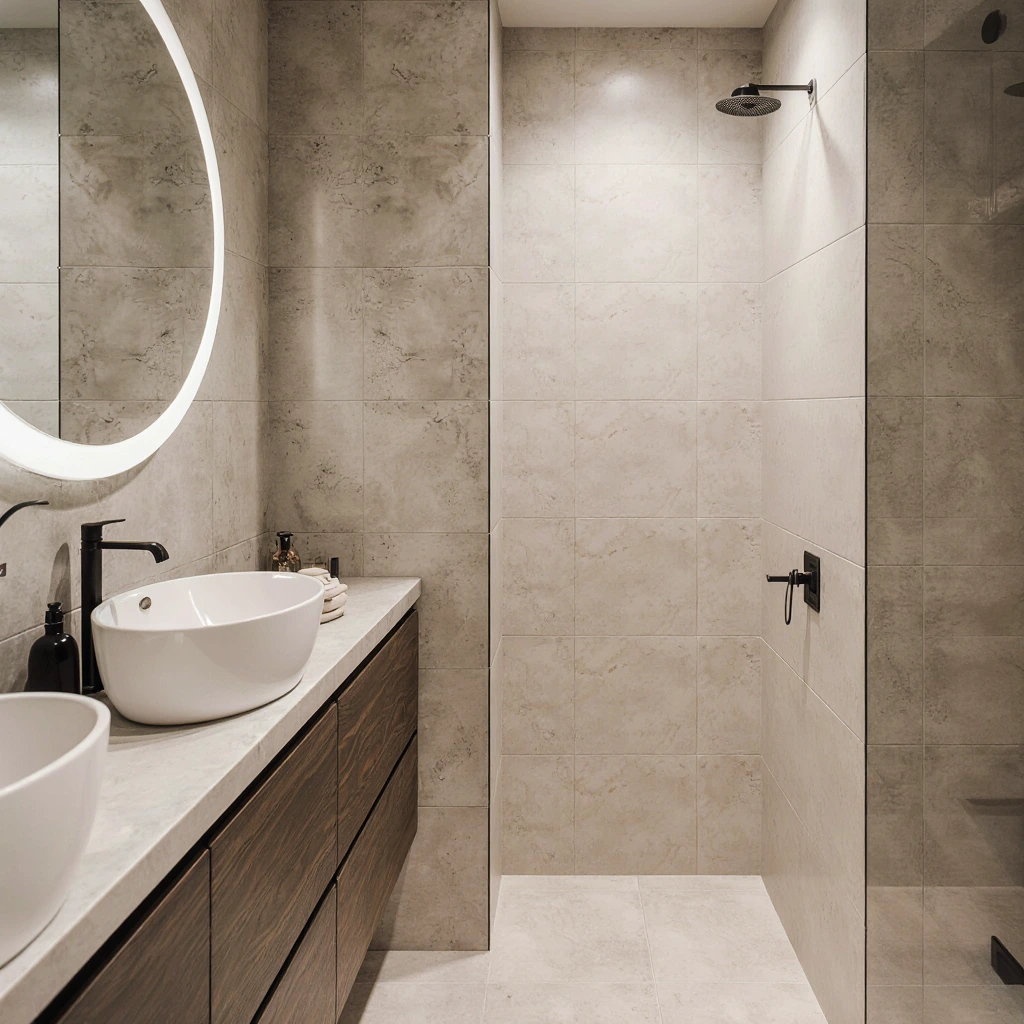
Effective and Efficient Floor Plans
The foundation of successful small master bathroom designs begins with choosing the right floor plan. Your bathroom’s space determines everything from fixture placement to flow of movement, making this decision crucial to long-term customer satisfaction.
Linear Layout: Ideal for narrow spaces, this layout places all fixtures along one wall, maximizing floor space in the middle. This approach works exceptionally well in bathrooms measuring 5 x 8 feet or similar dimensions.
L-Shaped Layout: Ideal for square or slightly rectangular spaces, this layout uses two adjacent walls to create separate areas for different functions while maintaining a sense of openness.
Optimize Corners: By placing your shower or bathtub in a corner, you can free up more usable floor space for movement and storage. Corner fixtures can increase perceived space by up to 30%.
Fixture Placement Strategies
Smart fixture placement is the shining point of small master bathroom designs. Consider these scientifically proven techniques:
Floating Bathtubs: Wall-mounted bathtubs create visual consistency with the floor, making the space appear larger while providing hidden storage space underneath.
Corner Bathtubs: These space-savers are especially ideal in shower designs or when you need to accommodate two people at once.
Pocket Doors: Replace traditional swing doors with pocket doors to reclaim 6 to 9 square feet of usable space—a huge advantage in small bathrooms.
Shower and Bathtub Combinations: For families who need two bathing options, modern alcove designs can accommodate both functions in a single traditional shower space.
Smart Storage Solutions for Maximum Organization
Maximize Vertical Storage
When floor space is limited, thinking vertically becomes essential. Successful small master bathroom designs utilize every inch of wall space for storage and visual appeal.
Floor-to-Ceiling Cabinets: Custom-made or semi-custom tall cabinets offer three to four times more storage space than traditional vanity solutions. Place them strategically to avoid overwhelming the space.
Recessed Medicine Cabinets: Built into wall recesses, they provide essential storage without protruding into the room. Modern versions can include LED lighting, electrical outlets, and even Bluetooth speakers.
Floating Shelves: Open shelving provides storage while maintaining visual light. Use consistent materials and spacing for a cohesive, uncluttered look.
Hidden Storage Innovations
Lower Drawers: The space beneath vanities is often unused, but lower drawers can store flat items like towels, cleaning supplies, and personal care products.
Mirror Storage: Large mirrors with hidden storage behind them serve two purposes: they reflect light to expand the space while concealing everyday items.
Niche Integration: Built-in shower niches and wall recesses provide storage without compromising space, keeping countertops clean and organized.
Versatile Furniture
Ottoman Storage: A beautiful ottoman can provide seating while concealing towels, toiletries, or seasonal items.
Vanity Chair Storage: Choose seating options with built-in storage compartments for a streamlined look.
Towel Ladder Storage: Decorative ladders are used to store towels while adding a vertical aesthetic.
Durable and Elegant Materials and Finishes
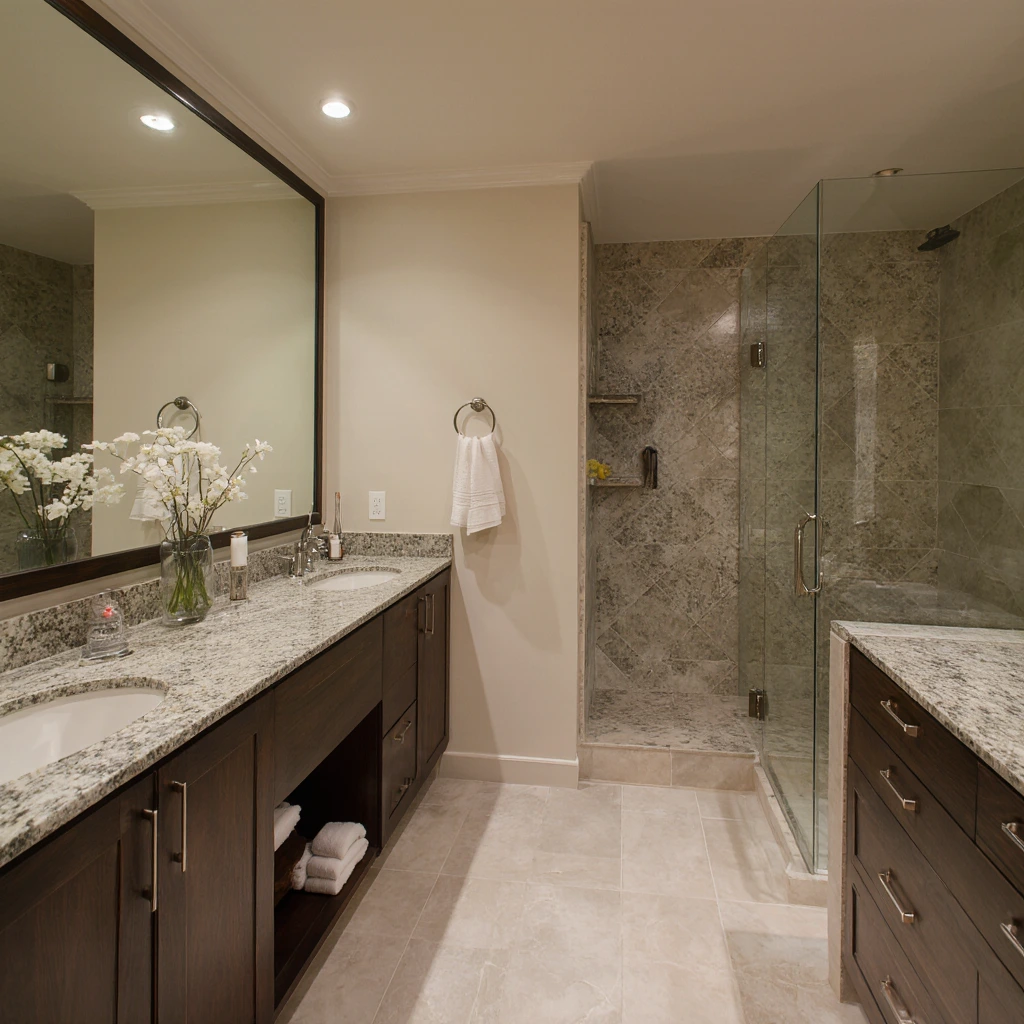
Light-Enhancing Materials
Small master bathroom designs benefit greatly from materials that reflect and enhance natural and artificial light.
Large-Format Tile: Tiles measuring 12 x 24 inches or larger minimize grout lines, making surfaces appear more spacious and easier to clean. Porcelain tile offers high durability with endless design possibilities.
Glass and Reflective Surfaces: Subway tiles with glossy finishes, reflective surfaces, and glass shower enclosures contribute to a brighter, more open feel.
Light-Colored Natural Stone: Marble, quartz, and limestone in light colors exude luxury while maintaining brightness. These materials also offer excellent durability for high-humidity environments.
Moisture-Resistant Options
**Luxury Vinyl Planks (LVP): Modern luxury vinyl planks mimic hardwood or natural stone, while offering superior water resistance and comfort underfoot. *Engineered Quartz*: Non-porous quartz surfaces resist stains and bacteria growth, with minimal maintenance.
Ceramic and Porcelain: These traditional options continue to evolve, with new technologies offering realistic wood and fabric textures.
Color Psychology in Small Spaces
Neutral Colors: White, cream, and light gray add a modern touch while expanding the space. These colors also allow flexibility in choosing accent colors and accessories.
Monochromatic Patterns: Using different shades from the same color family adds depth without visual distraction.
Strategic Accent Colors: Bold colors work well in small quantities—think navy bathtubs, brass fixtures, or colorful artwork, rather than bold wall colors.
Lighting and Ventilation Solutions
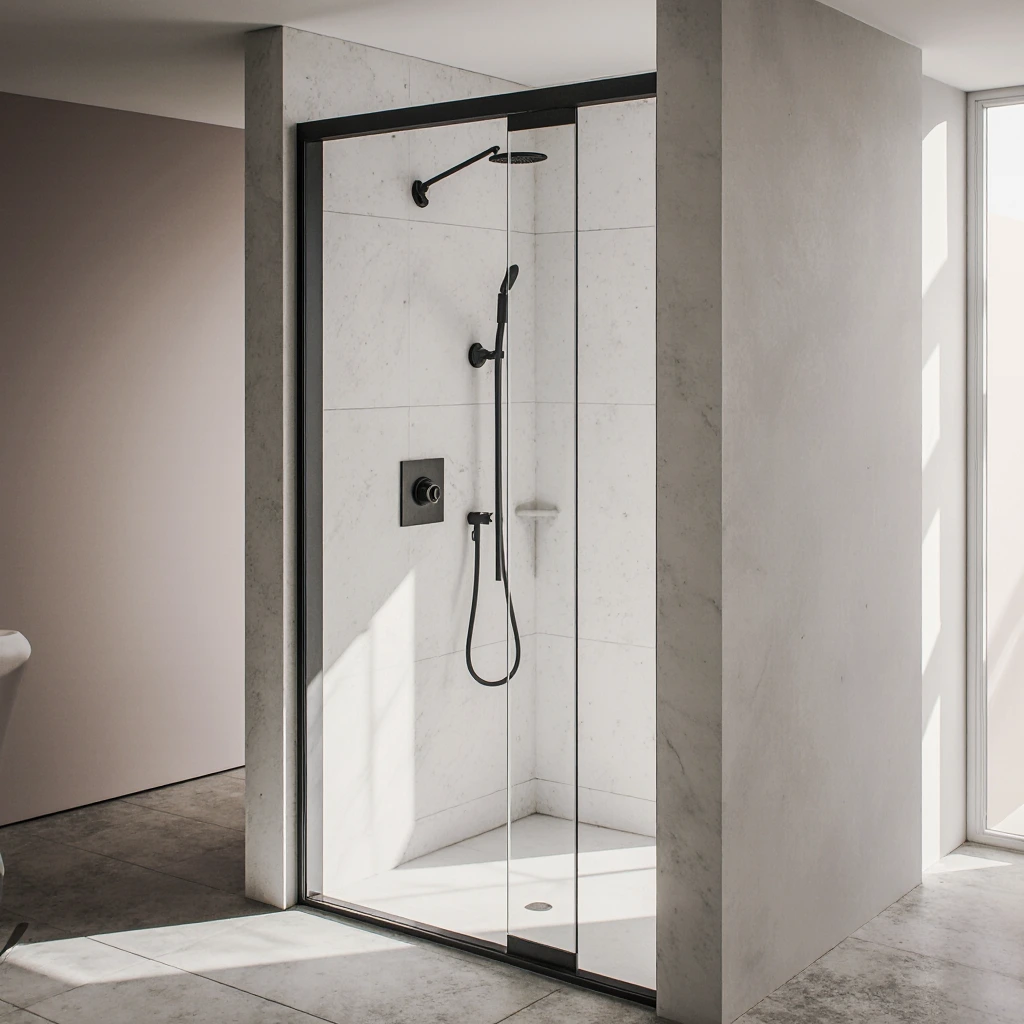
A Layered Lighting Approach
Proper lighting can transform small master bathroom designs from cramped to luxurious. Professional designers recommend three layers of accent lighting.
Ambient Lighting: Provides all-over illumination through recessed ceiling lights, built-in fixtures, or LED strip lighting. Aim for 1 watt per square foot of bathroom space.
Task Lighting: Essential for grooming activities, task lighting should eliminate shadows around mirrors and bathtubs. Column sconces surrounding mirrors provide more inviting illumination.
Task Lighting: Adds ambiance and highlights architectural features. Consider using recessed lighting under freestanding bathtubs or LED strips behind mirrors for a hotel-like feel.
Enhancing Natural Light
Privacy Window Solutions: Tinted glass, window films, or strategically placed mirrors can provide privacy while maintaining natural light flow.
Skylights and Skylights: When possible, natural overhead light greatly enhances the functionality and overall mood of small bathrooms.
Skylights: For basement or interior bathrooms, skylights can direct natural light from adjacent rooms or hallways.
Ventilation Requirements
Proper ventilation prevents mold, mildew, and structural damage while maintaining air quality.
Exhaust Fan Sizes: Choose fans rated to handle 1 cubic foot per minute (cfm) per square foot of bathroom space, with a minimum of 50 cfm for most applications.
Humidity Control: Modern exhaust fans with humidity sensors automatically activate when humidity levels rise, providing hands-free protection.
Strategic Placement: Place exhaust fans near bathing areas for maximum moisture removal efficiency.
Common Design Mistakes and Their Solutions
Crowding Problems
Problem: Trying to fit too many fixtures or features into a limited space.
Solution: Prioritize essential functions and choose versatile fixtures. A beautiful, spacious shower head may be more valuable than a cramped bathtub and shower.
Inadequate Storage Planning
Problem: Lack of storage leads to cluttered countertops and poor performance.
Solution: Plan for storage during the initial design phase, not as an afterthought. Incorporate concealed and open storage options.
Poor Lighting Choices
Problem: A single overhead light creates harsh shadows and an unpleasant atmosphere.
Solution: Apply the three-tiered lighting technique mentioned earlier, focusing particularly on lighting the vanity area.
Sizing and Proportion Mistakes
Problem: Choosing fixtures or accessories that are too large or small for the space.
Solution: Use the 60-30-10 rule to achieve visual balance – 60% dominant color/material, 30% secondary elements, 10% accent pieces.
Ignore the traffic
Problem: Poor fixture placement creates traffic jams or uncomfortable movement patterns.
Solution: Maintain a minimum of 76 cm in front of major fixtures, and 53 cm between fixtures if possible.
Maximize Functionality in Small Spaces
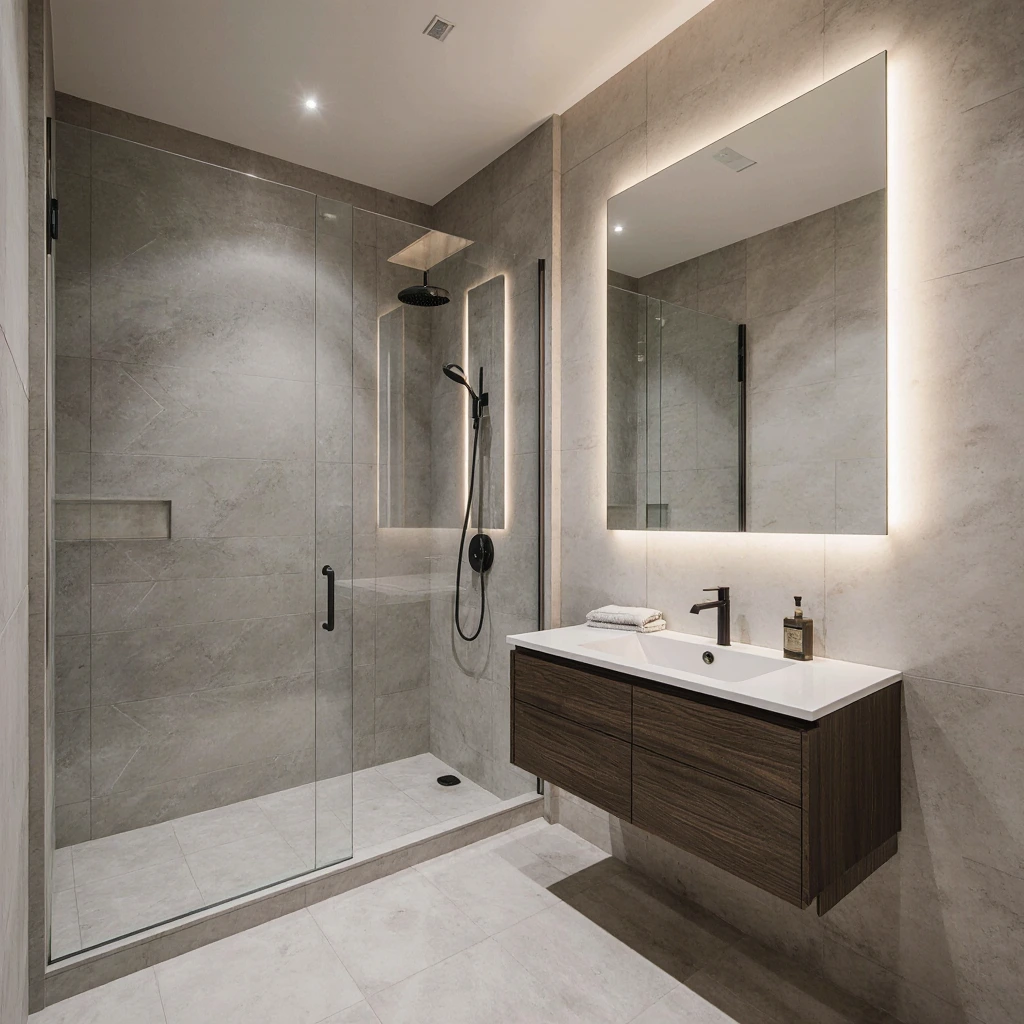
Integrate Smart Technology
Contemporary small master bathroom designs can benefit greatly from technological solutions that save space while adding convenience.
Smart Mirrors: These multifunctional units can include LED lighting, weather displays, music streaming, and even TV capabilities without requiring additional wall space.
Built-in Smart Toilets: High-efficiency models with built-in bidet functions eliminate the need for separate fixtures while offering luxury features.
Digital Shower Controls: Programmable shower systems allow multiple users to save their preferred temperature and pressure settings, making shared bathrooms more efficient.
Space-Saving Installation Innovations
Wall-mounted toilets: Create a floating appearance, facilitate floor cleaning, and provide access to hidden storage spaces.
Curved glass shower doors: Curved doors provide more interior shower space than traditional rectangular designs, while maintaining the same footprint.
Combined sink-to-counter designs: Seamlessly blended sink and counter combinations eliminate visual gaps, simplifying cleaning and maintenance.
Creating Continuity and Visual Flow
Material Consistency
Successful small master bathroom designs maintain visual consistency through careful material selection and placement.
Continuous Flooring: Using the same flooring material throughout the space eliminates visual gaps that can make spaces feel small.
Coordinating Hardware: Coordinating finishes on faucets, drawer handles, towel bars, and lighting fixtures create a professional and coordinated look.
Unified Color Stories: Even when using multiple materials, maintaining a consistent color temperature and intensity produces smooth transitions.
Optical Illusion Techniques
Horizontal Lines: Horizontal subway tiles, linear lighting fixtures, and horizontal mirror orientations can make narrow spaces appear wider.
Diagonal Patterns: Diagonal floor tiles add a dynamic visual touch while making rectangular spaces appear larger.
Transparent Borders: Glass shower enclosures and clear storage containers maintain sight lines while providing functionality.
Budget-Friendly Design Strategies
High-Impact, Low-Cost Updates
Not all small master bathroom designs require complete renovations. Strategic updates can dramatically improve function and appearance.
Paint Changes: High-quality paint in light, reflective colors provides immediate impact at a low cost. Consider using moisture-resistant bathroom paints with mold protection.
Hardware Updates: New cabinet handles, faucets, and light fixtures can completely refresh a space without the need for major construction.
Mirror Upgrades: Large, well-placed mirrors are one of the most cost-effective ways to visually expand small bathrooms.
Prioritize Renovation Investments
Plumbing and Electrical: Address infrastructure needs first to avoid costly repairs later. Proper initial finishing work enables future upgrades.
Storage Solutions: Built-in storage provides long-term value and functionality that accessories cannot match.
High-Quality Fixtures: Invest in the tools you interact with daily—faucets, showerheads, and vanity lighting significantly impact the user experience.
Conclusion
Designing great small master bathrooms requires balancing creativity, practicality, and budget considerations. By focusing on smart layouts, strategic storage solutions, the right materials, and the right lighting, even very small spaces can deliver luxury and efficiency.
The secret is to view limitations as opportunities for innovation rather than obstacles to be overcome. Every square foot counts in small bathroom design, making thoughtful planning essential for long-term satisfaction.
Remember that successful bathroom renovations typically take two to four weeks to complete professionally, with the planning phase extending several weeks beforehand. Begin the design process by measuring your existing space, identifying essential features, and consulting with qualified professionals familiar with local building codes and permitting requirements.
Ready to transform your small master bathroom into your own private sanctuary? Start by prioritizing your functional needs and aesthetic preferences. Consider consulting a bathroom design professional who can help you choose the right fixtures, optimize your design, and ensure your project stays on budget while maximizing its impact.
Act today: Share your current bathroom challenges in the comments below, and don’t forget to sign up for our newsletter for weekly home improvement tips and exclusive design insights. Your dream bathroom makeover is closer than you think!
Best Amazon Picks :
FAQs
Q: What is the minimum size for a practical master bathroom?
A: A practical master bathroom can be as small as 40 square feet (5 x 8 feet), although 50-60 square feet offers more convenient movement and storage options. The key is efficient design planning, not overall space.
Q: What is a reasonable budget for a small master bathroom renovation?
A: A small master bathroom renovation typically costs between $15,000 and $35,000, depending on the quality of fixtures, structural changes, and local labor costs. Basic updates can cost between $8,000 and $12,000, while luxury renovations can exceed $40,000.
Q: What are the best flooring options for small master bathrooms?
A: Large-format porcelain tiles (12 x 24 inches or larger) are ideal because they minimize grout lines and make spaces appear larger. Luxury vinyl planks (LVP) and engineered stone are also excellent moisture-resistant options.
Q: How can I make my small master bathroom feel more luxurious?
A: Focus on high-quality materials, appropriate lighting, and meticulous detailing. Luxury fixtures, heated floors, high-quality appliances, and spa-like accessories create a sense of luxury no matter the size of the space.
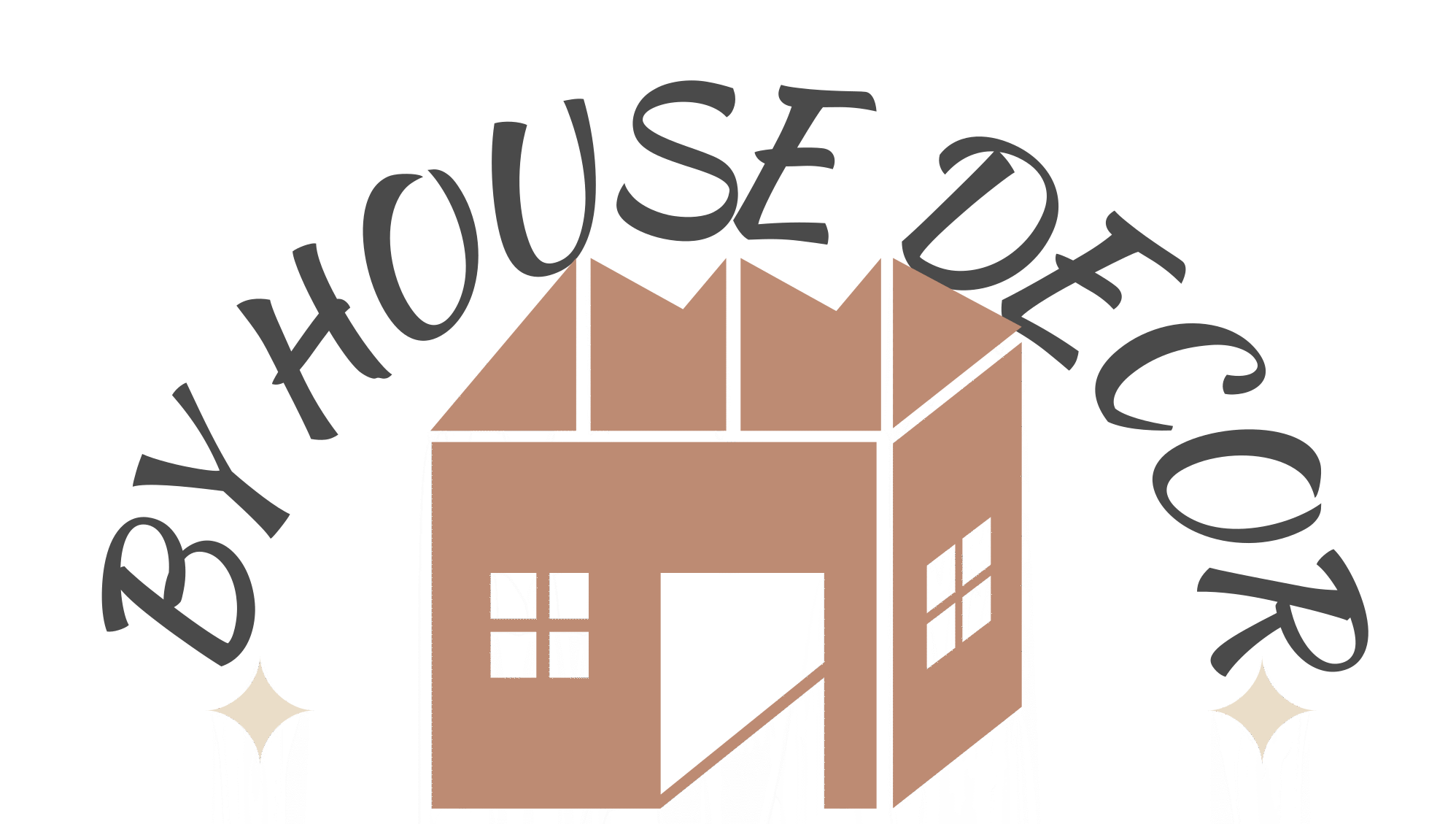
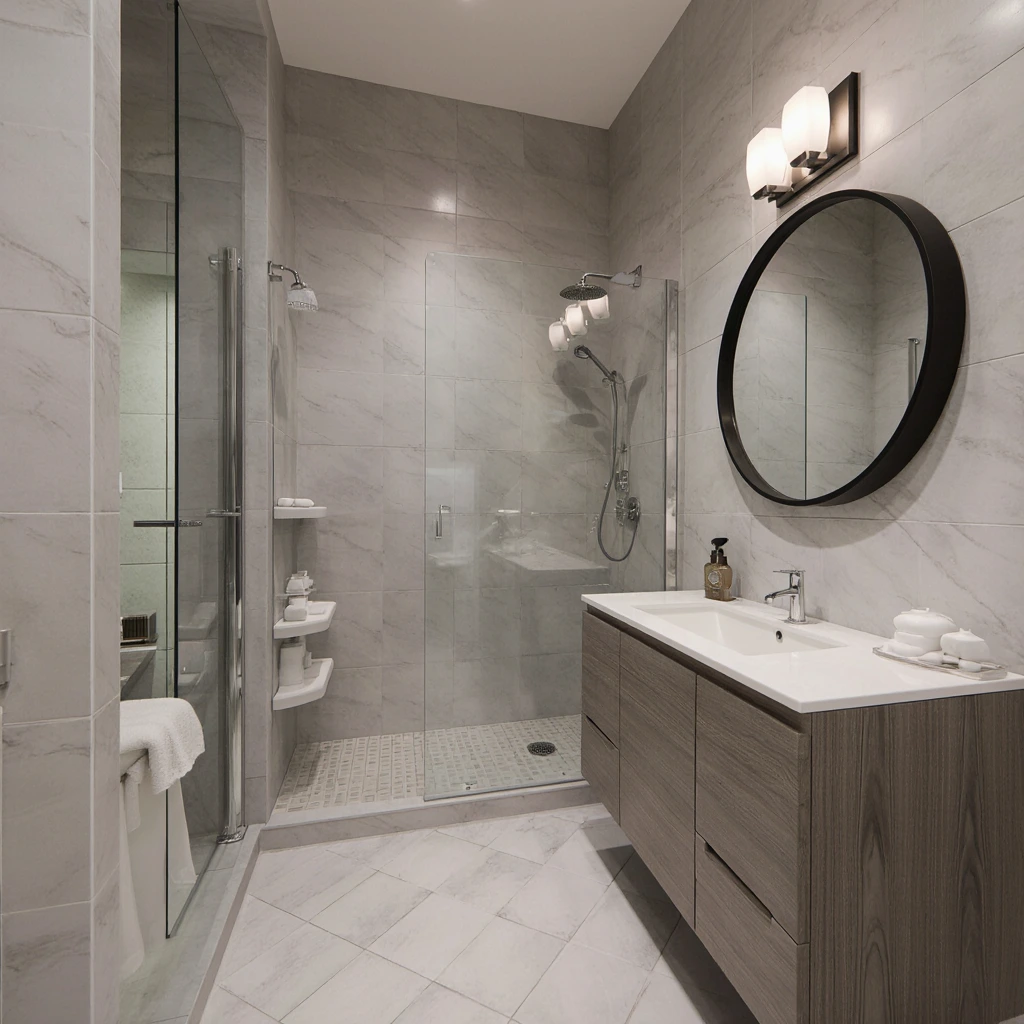
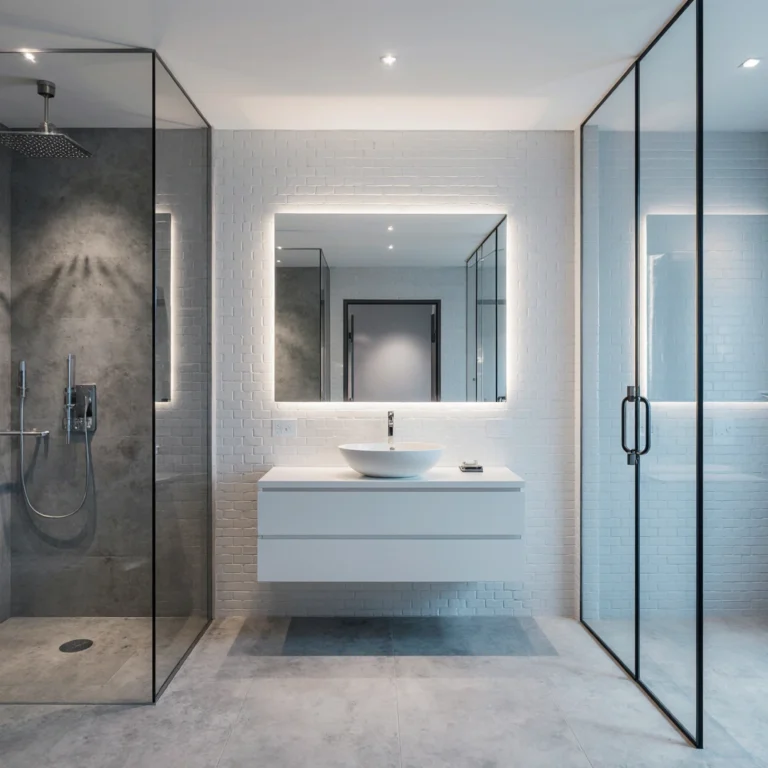

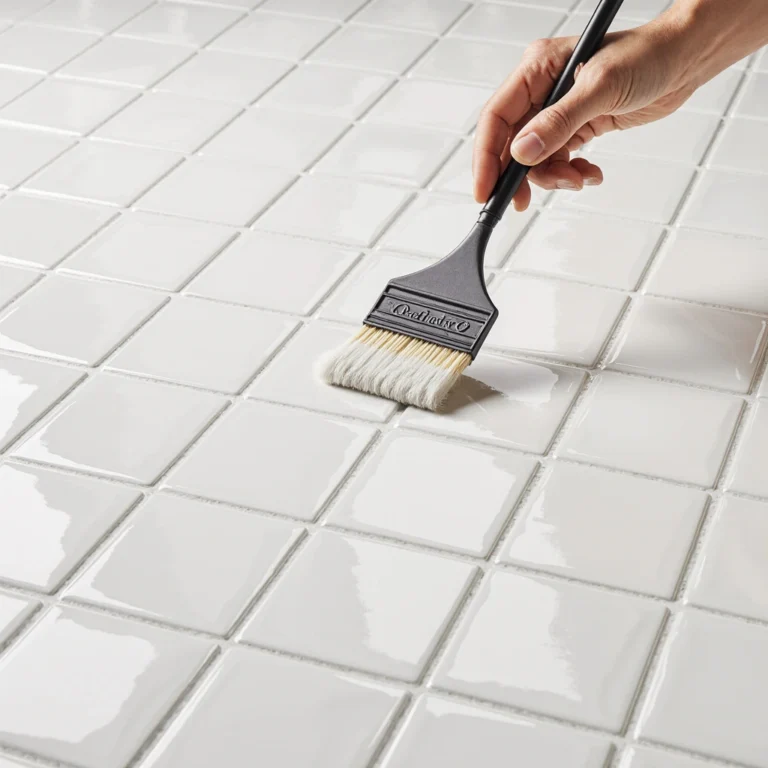
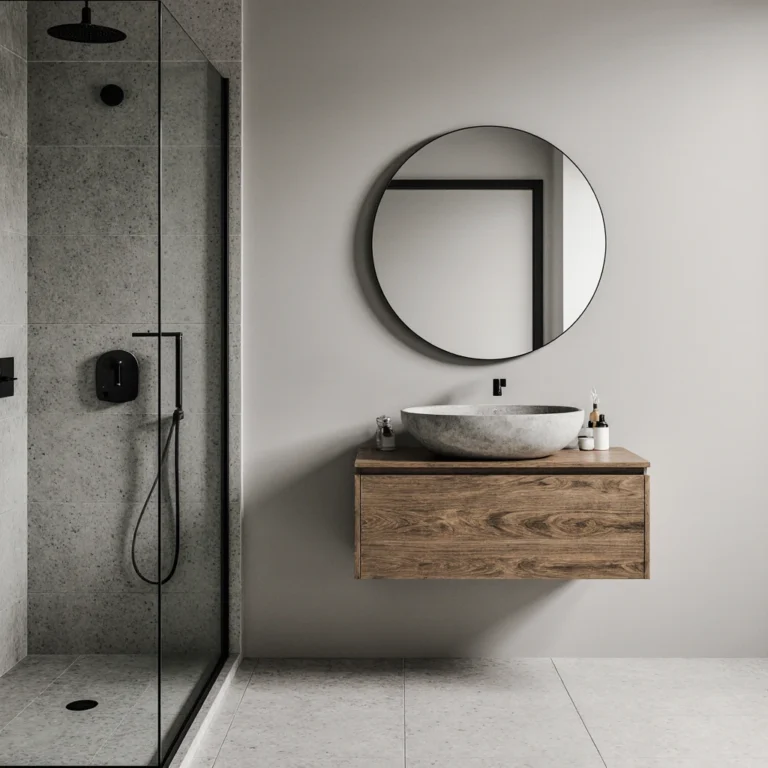
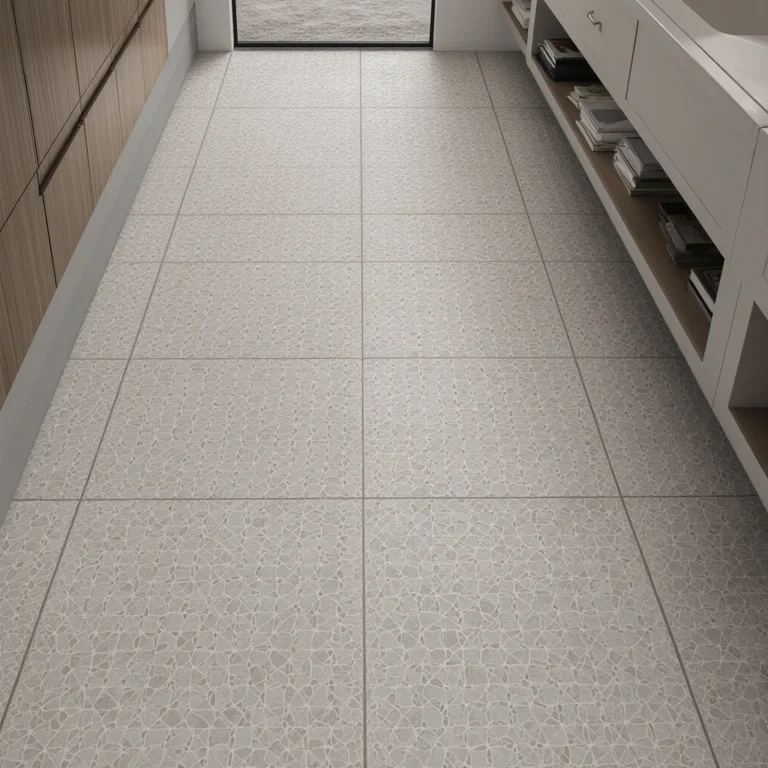
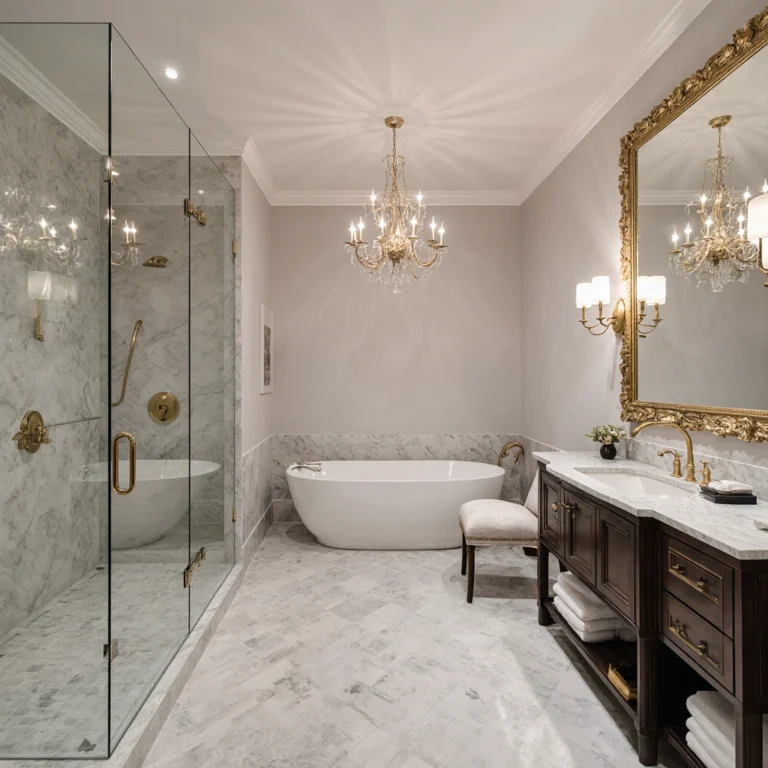
2 Comments
Comments are closed.